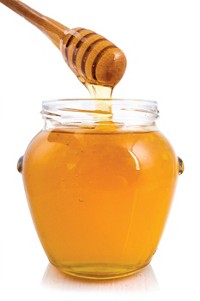Advertisement
Grab your lab coat. Let's get started
Welcome!
Welcome!
Create an account below to get 6 C&EN articles per month, receive newsletters and more - all free.
It seems this is your first time logging in online. Please enter the following information to continue.
As an ACS member you automatically get access to this site. All we need is few more details to create your reading experience.
Not you? Sign in with a different account.
Not you? Sign in with a different account.
ERROR 1
ERROR 1
ERROR 2
ERROR 2
ERROR 2
ERROR 2
ERROR 2
Password and Confirm password must match.
If you have an ACS member number, please enter it here so we can link this account to your membership. (optional)
ERROR 2
ACS values your privacy. By submitting your information, you are gaining access to C&EN and subscribing to our weekly newsletter. We use the information you provide to make your reading experience better, and we will never sell your data to third party members.
Analytical Chemistry
NMR Detects Contaminants In Heparin
Drug Safety: Analytical method can spot adulterated anticoagulant
by Erika Gebel
July 19, 2012

Dozens of people in the U.S. died in 2007 and 2008 when they received contaminated doses of heparin, a common blood thinner. To help regulators spot future cases of adulteration, researchers have developed a nuclear magnetic resonance method that exposes any additive in heparin samples (Anal. Chem., DOI: 10.1021/ac301428d).
Medical heparin is a polysaccharide extracted from the intestines of pigs. The exact structure of the sugar chain varies from pig to pig, says Timothy Rudd of the Ronzoni Institute, in Milan, Italy. As a result, regulators typically assess heparin’s purity based on its anticoagulant activity.
In 2008, scientists used NMR spectroscopy to search contaminated heparin samples for the signatures of adulterants. The bad actor turned out to be oversulfated chondroitin sulfate, another anticoagulant.
Unfortunately, this method would miss other contaminants. Rudd wanted to create an NMR-based description of heparin, so that regulators could detect any non-pig-heparin molecule in a sample. This description would include signals unique to pig heparin and would delineate how those signals change from batch to batch.
He and his colleagues collected and combined NMR data from 57 heparin samples. They defined heparin’s unique NMR signals as those whose intensity varied together from sample to sample. Next the researchers collected data on 12 more heparin samples. By comparing the chemical shifts and intensities of signals in these spectra to those of the first library, the researchers established how much heparin’s signals varied naturally.
To test their definition, the researchers spiked samples of heparin with sheep and cow heparin, which vary only slightly from pig heparin. NMR signals from sheep and cow heparin were clearly outside the range of pig heparin’s natural variation, allowing the researchers to expose contaminant levels as low as 1%.




Join the conversation
Contact the reporter
Submit a Letter to the Editor for publication
Engage with us on Twitter